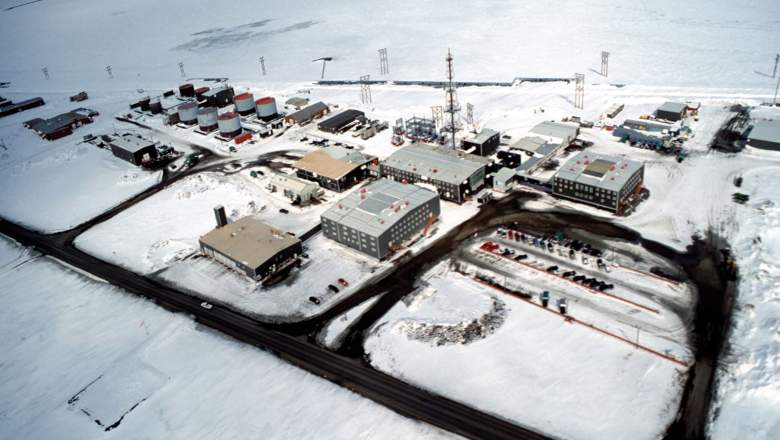
2020 Presidential candidate Andrew Yang will take the stage tonight for a chance to officially solidify himself as an outside threat in the 2020 Democratic primary.
Yang’s main policy proposal is to provide every American citizen who wants it a Universal Basic Income (UBI) of $1,000 dollars a month. He calls the proposal the Freedom Dividend.
“Andrew would implement a Universal Basic Income, ‘the Freedom Dividend,’ of $1,000/month, $12,000 a year for every American adult over the age of 18,” Yang’s campaign website reads.
When asked why he thinks his Freedom Dividend will be able to pass through Congress bipartisanly, Yang typically points to Alaska as a deep-red state that already has a dividend put into place. He also mentions the likes of Martin Luther King Jr., Milton Friedman and Thomas Paine as advocates of basic income.
Alaska’s UBI is called the Alaska Permanent Fund, and it directs oil revenue towards a yearly dividend which pays every Alaska citizen $1,000 to $2,000 a year. Yang wants to do something similar but with all of America using the USA’s massive and un-taxed tech industry.
Here’s what you need to know about Alaska’s Permanent Fund:
1. Alaska Had to Amend Their Constitution to Allow the Creation of the Permanent Fund

Getty Andrew Yang
As the Trans Alaska Pipeline neared completion in 1974, the Alaskan people were wanting to know how they could prosper off of the anticipated increase in mineral royalties, according to Alaska Permanent Fund Corporation’s website.
Just two years later, a constitutional amendment was put on a state-wide ballot to allow the state to put the royalties into a “permanent fund” that would be out of reach from day-to-day government spending. The ballot measure passed overwhelmingly being voted into law 75,588 votes to 38,518.
Alaska Constitution Article IX, Section 15, the Alaska Permanent Fund allowed 25 percent of all mineral royalties to put into a permanent fund:
At least twenty-five percent of all mineral lease rentals, royalties, royalty sale proceeds, federal mineral revenue sharing payments and bonuses received by the State shall be placed in a permanent fund, the principal of which shall be used only for those income-producing investments specifically designated by law as eligible for permanent fund investments. All income from the permanent fund shall be deposited in the general fund unless otherwise provided by law.
2. The First Dividend Check of $1000 Was Distributed in 1982
Just six years after amending their state’s constitution the Alaskan government sent out their first dividend checks of $1000 to the public, per Alaska Permanent Fund Corporation’s website.
In 1989, the Alaska Permanent Fund reached $10 billion in value even after a stock market crash in the fall of 1987.
“The autumn of 1987 was accompanied by a stock market crash, but despite the bear market, the Permanent Fund’s performance ranked in the top 9 percent of all public funds in the U.S. Two years after the crash in 1989, the Permanent Fund assets reached $10 billion,” the Alaska Permanent Fund Corporation’s website reads.
3. Today the Fund’s Value Has Exceeded $60 Billion
Ever since the creation and distribution of the fund in the late 1970s and early 1980s, the value of Alaska’s Permanent Fund has skyrocketed, per the Alaska Permanent Fund Corporation’s website.
In 1998 the fund earned more money than state oil revenues for the first time, as the fund surpassed the $25 billion mark. The fund then increased $10 billion in the next ten years. Even after the recession of 2008, Alaska’s fund continued to increase.
“In 2008, a global recession caused one of the five worst years in the 218-year history of the U.S. stock market. Oil prices climbed to $140 per barrel, and despite declining production, produced the highest mineral deposits to the Fund’s principal to date: $844 million,” the Alaska Permanent Fund Corporation’s website reads.
Today the fund is worth more than $60 billion.
4. Officials Say the Permanent Income Can Contribute up to $1.5 Billion to the State’s Economy
Presidential candidate Andrew Yang claims the Alaska Permanent Fund is popular and is a large contributor to the state’s economy.
“It is wildly popular in a conservative state. It has created thousands of jobs, reduced income inequality, and improved health for children,” Yang said in a post on Twitter.
State Senator Bill Wielechowski also praises the fund, claiming it feeds up to $1.5 billion dollars into the state’s economy.
“It creates thousands of jobs because all the sudden you have an influx of anywhere from $700 million to a billion and a half dollars into our economy. In a state of our size, is really an enormous amount.” Wielechowski said in a pro-permanent fund video posted to Twitter.
“I can’t see why you can’t have a similar type of permanent fund program for the rest of the United States,” Wielechowski added.
5. The Permanent Fund Has Helped Increase the Health of Children and Has Contributed to Small Decreases in Crime
According to Big Think, Alaska’s Permanent Fund has reduced childhood obesity, increased work rates among men, has allowed women to spend more time with their family and has marginally decreased crime.
Mouhcine Guettabi, a researcher at the University of Alaska’s Institute of Social and Economic Research, told Big Think the fund benefits the lives of many Alaskans but it is not the end-all-be-all of quality of life.
Big Think reports women have tended to work less, men have tended to work slightly more, property and substance abuse crimes have marginally decreased and childhood obesity has dropped 4.5 percent for every additional $1,000.
Although Yang’s proposal is 12-times the amount of Alaska’s Permanent Fund, he uses Alaska’s fund as an example of UBI’s popularity, its effect on the well-being of people’s lives and the bipartisan nature of the concept.